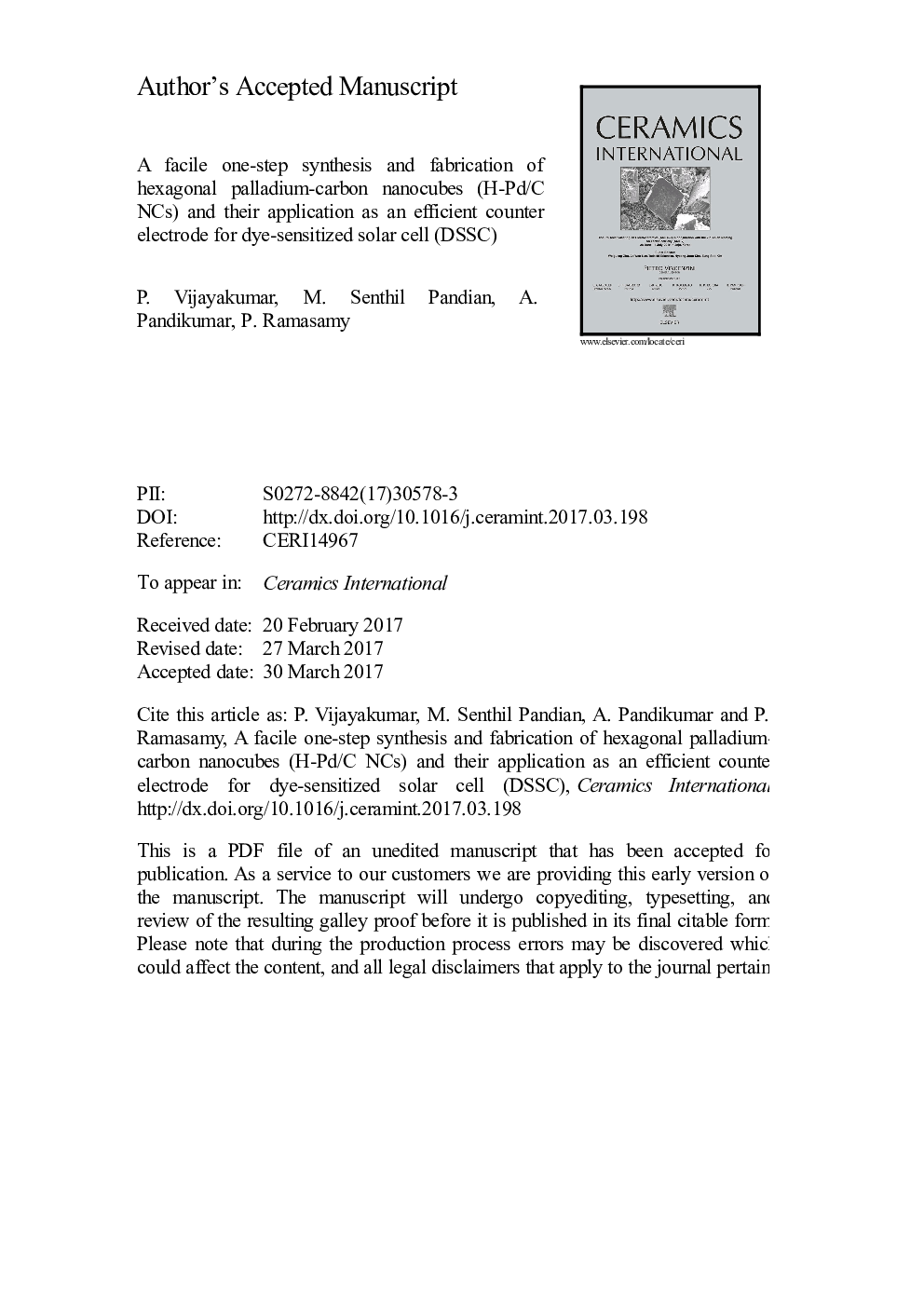| Article ID | Journal | Published Year | Pages | File Type |
|---|---|---|---|---|
| 5437776 | Ceramics International | 2017 | 26 Pages |
Abstract
Hexagonal palladium-carbon nanocubes (H-Pd/C NCs) were prepared using a simple one-step chemical synthesis protocol and subsequently the prepared materials were used as the counter electrode (CE) in dye sensitized solar cell (DSSC) to replace the platinum (Pt) electrode. The H-Pd/C NCs were characterized by a variety of suitable analytical techniques including powder X-ray diffraction (PXRD), transmission electron microscopy (TEM), scanning electron microscopy (SEM), energy dispersive spectroscopy (EDS), Raman spectroscopy, X-ray photoelectron spectroscopy (XPS) and Brunauer-Emmett-Teller (BET) analysis to evaluate the crystalline, structural, morphological, compositional, chemical state and surface area. The BET nitrogen adsorption /desorption analysis shows that the as-prepared H-Pd/C NCs sample had a large surface area (568.8Â m2Â gâ1) with average pore size of â¼3Â nm. Cyclic voltammetry (CV) and electrochemical impedance spectroscopy (EIS) analyses indicate that the H-Pd/C NCs have low charge-transfer resistance on the electrolyte/electrode interface and high electrocatalytic activity for the reduction of triiodide to iodide redox electrolyte and hence it is used as a CE in DSSC. The H-Pd/C NCs showed an overall power conversion efficiency (PCE) of 4.1% which performance is comparable with the conventional Pt CE (4.0%) under the identical condition.
Related Topics
Physical Sciences and Engineering
Materials Science
Ceramics and Composites
Authors
P. Vijayakumar, M. Senthil Pandian, A. Pandikumar, P. Ramasamy,
